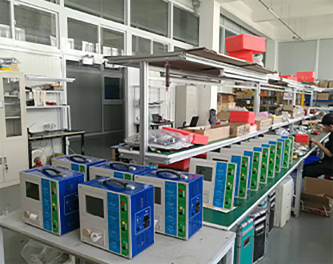 English
English


Understanding Knee Voltage in Current Transformers Analysis and Applications
Understanding Knee Voltage in Current Transformers A Key Concept
Current transformers (CTs) play a vital role in electrical engineering, particularly in the realms of power measurement and protection. Among the various attributes that characterize these transformers, the concept of knee voltage is particularly significant. This article delves into the knee voltage of current transformers, its implications, and its importance in ensuring the reliable operation of power systems.
What is Knee Voltage?
Knee voltage refers to a specific point on the saturation curve of a current transformer. In simpler terms, it is the voltage level at which the current transformer begins to saturate and cannot provide a reliable output proportional to the primary current. This saturation behavior is critical because it can lead to inaccuracies in measurements and potentially hazardous situations if left unaccounted for.
When a current transformer operates below the knee voltage, it can accurately transform a high primary current into a lower secondary current, proportionate to the turns ratio of the transformer. However, as the input current approaches the knee voltage, the transformer begins to saturate, leading to a non-linear output. Beyond this point, any further increase in primary current will not produce a proportional increase in the secondary current, ultimately distorting the measurement.
Importance of Knee Voltage
Understanding knee voltage is essential for several reasons
1. Accurate Measurement For metering applications, having a clear understanding of knee voltage ensures that the CT operates within its linear region. This is vital for the accuracy of energy measurements, especially in high-load scenarios where current levels can fluctuate significantly.
2. Protection Systems In protective relaying applications, CTs are used to detect overcurrent conditions. Knowing the knee voltage helps engineers set effective relay thresholds. If the relay is set to operate based on a current that causes saturation, it might fail to trip during a fault condition, leading to equipment damage or system failures.
knee voltage of current transformer

3. System Design During the design phase of power distribution systems, engineers must select CTs with appropriate knee voltage ratings based on the anticipated load currents. This involves taking into account factors like the maximum load, the nature of the load (whether it is steady or fluctuating), and the safety margins required for reliable operation.
Factors Influencing Knee Voltage
Several factors can influence the knee voltage of a current transformer
- Core Material The type of magnetic material used in the core of the CT plays a significant role in determining the knee voltage. Different materials have different saturation characteristics, which are integral to specifying a CT for a particular application.
- Turns Ratio The ratio of the primary to secondary turns affects the current transformation ratio and the corresponding knee voltage. A CT designed with a higher turns ratio may exhibit a different knee voltage compared to one with a lower turns ratio, even when other conditions are the same.
- Temperature and Environmental Conditions External conditions can also impact the performance of current transformers. Changes in temperature can affect the material properties of the core, thereby influencing the knee voltage.
Conclusion
In summary, knee voltage is a critical parameter in the design and operation of current transformers. By understanding and accounting for this characteristic, engineers can ensure accurate measurements, reliable protection mechanisms, and robust power system designs. As electrical systems become increasingly complex and demand higher levels of precision, the importance of knee voltage in maintaining system integrity and efficiency cannot be overstated. Whether for metering applications or protective schemes, keeping knee voltage considerations at the forefront can significantly enhance the reliability and safety of electrical systems.
-
Differences between open cup flash point tester and closed cup flash point testerNewsOct.31,2024
-
The Reliable Load Tap ChangerNewsOct.23,2024
-
The Essential Guide to Hipot TestersNewsOct.23,2024
-
The Digital Insulation TesterNewsOct.23,2024
-
The Best Earth Loop Impedance Tester for SaleNewsOct.23,2024
-
Tan Delta Tester--The Essential Tool for Electrical Insulation TestingNewsOct.23,2024





